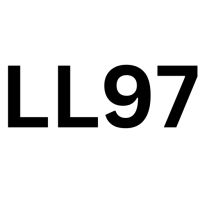Summary
Cut through the green tape
We don't push agendas. At Net Zero Compare, we cut through the hype and fear to deliver the straightforward facts you need for making informed decisions on green products and services. Whether motivated by compliance, customer demands, or a real passion for the environment, you’re welcome here. We provide reliable information—why you seek it is not our concern.
Details
- New York
Deep dive
Background
Enacted in 2019 as part of New York City’s Climate Mobilization Act, Local Law 97 (LL97) is a landmark state-level carbon emissions reduction measure in the United States. LL97 is administered by the New York City Department of Buildings (DOB) oversees enforcement and compliance monitoring, and the Mayor’s Office of Sustainability which is responsible for policy guidance and implementation strategies. LL97 builds on earlier efforts to track building energy use in New York, notably the Local Law 84 (2009), which required annual assessments of energy and water consumption for large buildings. However, LL97 goes further by imposing strict carbon emissions limits rather than just reporting, aligning with NYC’s goal to reduce building emissions 80% by 2050. Buildings account for 70% of New York City’s GHG emissions and 40% of New York State's GHG emissions, making LL97 a pillar of its climate strategy.
Emissions Reporting Requirements and Process
Starting in 2025, LL97 requires owners of covered buildings in New York to submit annual GHG emissions reports through the DOB’s online portal - Building Energy Analysis Manager (BEAM). Reports with emissions data for the previous calendar year are due by 1 May of each year: emissions for the calendar year 2024 are due by 1 May 2025. Reports must detail emissions from direct sources (Scope 1), such as on-site fuel combustion, and indirect sources (Scope 2), including purchased electricity and steam. The DOB provides a detailed technical guidance manual including emissions calculation methods, which are consistent with EPA GHG Protocol standards. The DOB urges building owners to consult legal advisors and Registered Design Professionals to ensure their properties meet LL97 compliance standards.
Covered Buildings and Scope
LL97 applies to most NYC buildings over 25,000 square feet, including residential, commercial, and institutional properties. It also applies to multiple buildings on one tax lot with a combined area exceeding 50,000 sq ft as well as condominium properties with two or more buildings under single board governance totaling over 50,000 square feet. The DOB has provided a Covered Building List for the 2025 calendar year identifying over 60,000 buildings (including their addresses and zip codes) subject to LL97 emissions reporting requirements. Covered buildings include, among others, apartment towers, offices, hotels, and hospitals. Smaller buildings (under 25,000 sq. ft.) are exempt, though some may qualify for incentives to voluntarily reduce emissions. Certain property types, like places of worship and rent-regulated affordable housing, have modified compliance timelines or alternate pathways to meet targets.
Penalties for Noncompliance
Buildings that exceed the annual emissions limits established by the law face fines of $268 per metric ton of carbon dioxide equivalent (CO2e) over the cap, with penalties escalating overtime. For example, a building emitting 500 tons over its limit could face a maximum annual penalty of $134,000. Moreover, failure to submit reports by the deadline incurs a flat fee of $.50 per square foot, while inaccurate submissions may lead to audits or enforcement actions. The DOB could publicly list non-compliant buildings, creating reputational risks in the housing market for commercial buildings.


